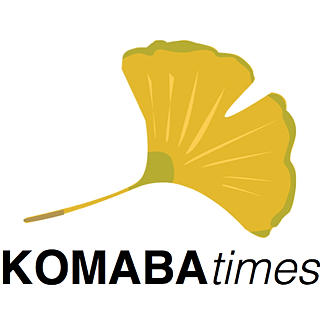Corporate Visit Part 1: Japanese Work Environment through the Eyes of an International Student
- Komaba Times
- Feb 10, 2017
- 3 min read
Updated: Oct 18, 2019
By TRUONG CONG YEN NHU

Work space in a typical Japanese company. All photos by author.
It is not common for a freshman to have a chance to experience a work environment in a big company. Last month, I had that precious opportunity to visit Fuji Heavy Industries, Ltd. (FHI), which is well-known for their automobile brand “Subaru.” Through the visit, I was not only able to witness a typical Japanese office, but also learnt a lot about the current employment situation in Japan. The company’s building, the Ebisu Subaru Building, which is a 5-minutes’ walk from Ebisu station, is located in Shibuya Ward. The downstairs are used as Subaru car showrooms and the office area is from the 7th floor. Before getting into the office area, guests are required to fill their name in a registration form and are given a visitor name tag.

“Family meeting” corner.
Each floor belongs to one or two different departments. Prior to the visit, I imagined that workspace in Japanese companies was closed and divided into separated compartments where everyone worked in his or her own private space. On the contrary, in FHI, it is quite a comfortable and open office space with new and modern facilities. Every staff member seemed to be proud of this new building. The company had just moved from the previous building in Shinjuku to this new one last September. Tables are laid next to each other, without any partition so that people can easily have discussions. Some FHI members often joke that this is a solution for the boss to prevent employees from doing their own personal work. Observing the difference types of chairs used by managers as opposed to that of other employers, it is easy to recognize that hierarchy has an important role in Japanese society.

Reception – before getting into the office area.
On each floor there is a coffee corner, where vending machines are located for a quick break. However, what FHI members are most proud of is the meeting corner, where small meetings are held. The way in which the furniture in this corner is designed potentially leads newcomers to feel confused about whether they are still in an office building or whether they have mistakenly wandered into a family restaurant. The only defining factor that resolves the confusion is the computer screens at the end of each table. For that reason, this place is also affectionately called ‘the family meeting place’ of the Subaru family. Also, different from the stereotype of aloof Japanese salaryman, FHI employees are very friendly, not only with guests but also with each other. The way they tenderly call their company ‘a family’ makes everyone seem to become a real family member. It is clear that the physical work environment can have a large impact on the working attitude of employees.

Outdoor space of Skyteria.
The company tour ended at the highest place of the building: Skyteria, the cafeteria on the 12th floor. With a capacity of 300 seats, this is the place where FHI staff members often come for lunch or a snack. There are various kinds of food and most of them are fairly affordable. Furthermore, this cafeteria also has an outdoor space, where people can enjoy their meal under the bright sunshine. In good weather, Tokyo Tower can be seen from this place.

Skyteria.
Ending up at a major company like this is considered a feat for many university students. Job hunting is an annual activity of third-year students in Japanese universities, which often starts from January. Almost every student has to prepare carefully for this major event, since it is considered to have a huge effect on his or her future. The competition is quite stiff; each student typically sends up to a hundred or more applications, goes to dozens of presentations and attends interviews with up to 30 other candidates before landing themselves a job.
Originally posted on Jan. 29, 2015





Comments